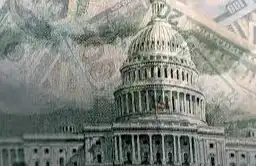Why can’t retail investors make money in the current crypto market?
Original author: Regan Bozman
Original translation: TechFlow
Why are there always people saying that this cycle is over? Why is everyone feeling pain? We can attribute all the problems to the fact that retail investors can no longer make real money under the current market structure.
Some random talks about returning to the basics and getting rid of the current cycle
Why are there no retail investors in this round of market? The answer is actually very simple - this is because the "traditional" cryptocurrency market (such as infra tokens) no longer has a 500x price. Now there is a more interesting casino with better memes at their fingertips.

We are actually reproducing what happened in the VC/IPO market, where companies stay private longer, which means that more upside remains "private" (such as venture capital funds) and retail investors cannot enter.

Crypto once reversed this and democratized access to asymmetric upside. But not anymore! L1 and L2 raised more money from VCs. There were no public token sales. VCs made money. Retail investors were marginalized. Perhaps it’s not so surprising that retail investors are disillusioned with this cycle.
A big reason companies are willing to stay private longer is that VCs now have five times more money than they did a decade ago. Companies can now raise $1 billion+ in private markets and don’t have to deal with the additional overhead of public markets.

Not surprisingly, the same trend is happening in crypto VC — there’s more money flowing into crypto VC funds now than there was five years ago.

Crypto should fix this!
ICOs were designed to democratize capital formation and further the return on venture. They have absolutely succeeded in doing that.
Buying Ethereum at 30 cents in 2014 at the ICO and seeing it at $3,000 today would represent a 10,000x return in 10 years, beating absolutely any venture capital investment in the same period. Anyone on the planet can participate, which is awesome.
Now that the industry has clearly grown, the entry price has naturally climbed, but these opportunities have not disappeared. $SOL launched at $0.22 in 2020 and is now at $140, that represents a 636x return in 4 years, which also likely beats almost all VC returns over the past five years.
We have moved away from this market structure in this cycle. There are now very few retail investors who have the opportunity to buy tokens pre-launch, or buy tokens on the open market at low prices.

Airdrops are indeed an improvement, and early users can get some financial gains compared to the existing VC paradigm. But they are not as financially superior to token sales, and by definition you can only make so much money from an airdrop.
We have moved from a market with uncapped upside to a market with capped upside - that is a huge change. $1,000 invested in SOL's ICO is now $636,000;
$1,000 invested in Eigen is only about $1,030...even if it goes up 10x, it's only $1,300. In the last cycle, you controlled your own destiny; in this cycle, you're waiting for Eigen's daddy's handout.
Financial nihilism means acknowledging that these markets have always been about money. Yes, that money funds the technology, but it's that money that drives the industry. If you weaken the money part, the entire industry will collapse.

There are several things we can do to improve the current issuance structure. The key is to create uncapped upside for early users and the community.

That said, there are larger structural issues in the market, with massive L1 and L2 fundraising leading to multi-billion dollar pre-launch valuations. This creates two problems: (A) a lot of sell-side pressure, and (B) a floor on the offering price at launch.
I think one of the structural issues facing most altcoins in this cycle is that VC selling pressure is not offset by retail inflows. If $500M is raised pre-launch, there will be $500M of selling pressure (potentially even more pressure if the token price rises).

Raising money privately at high valuations means you’ll be trying to sell at even higher valuations. This can lead to a situation where the market can only go down.

The relationship between venture and retail investors doesn’t need to be adversarial. Everyone on $SOL made money.

But it becomes much harder if you’re trying to cram too much VC money into an illiquid market. It’s nearly impossible if you’re depriving the most important market participants of uncapped upside.
We can point fingers and argue about meme coins, but that completely misses the point of the problem. Meme coins aren’t the problem — our current market structure is. Let’s get back to our democratic roots and fix what’s wrong with our current market.
Original link
Welcome to join the official BlockBeats community:
Telegram Subscription Group: https://t.me/theblockbeats
Telegram Discussion Group: https://t.me/BlockBeats_App
Official Twitter Account: https://twitter.com/BlockBeatsAsia


 Forum
Forum Finance
Finance
 Specials
Specials
 On-chain Eco
On-chain Eco
 Entry
Entry
 Podcasts
Podcasts
 Activities
Activities
 OPRR
OPRR








